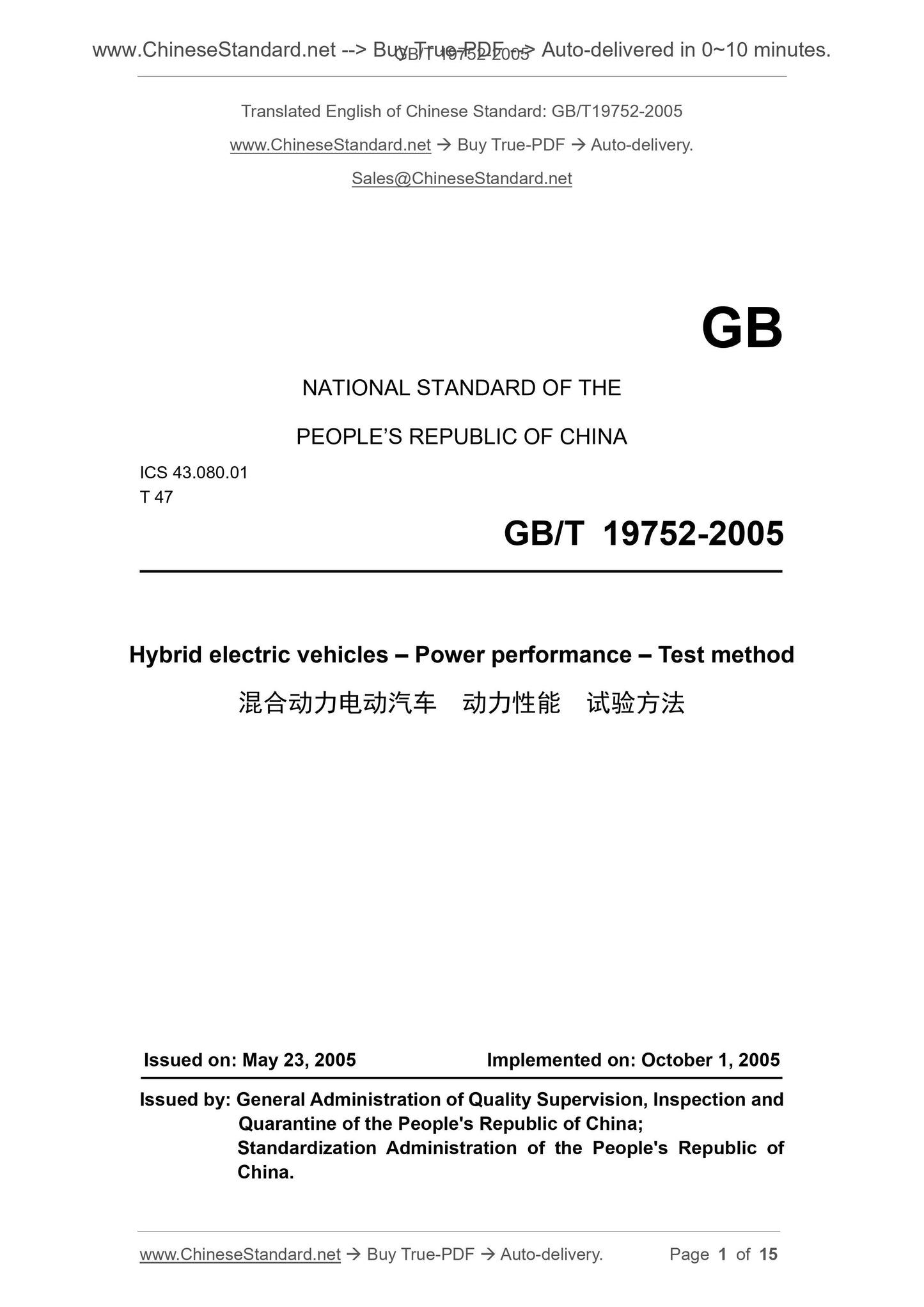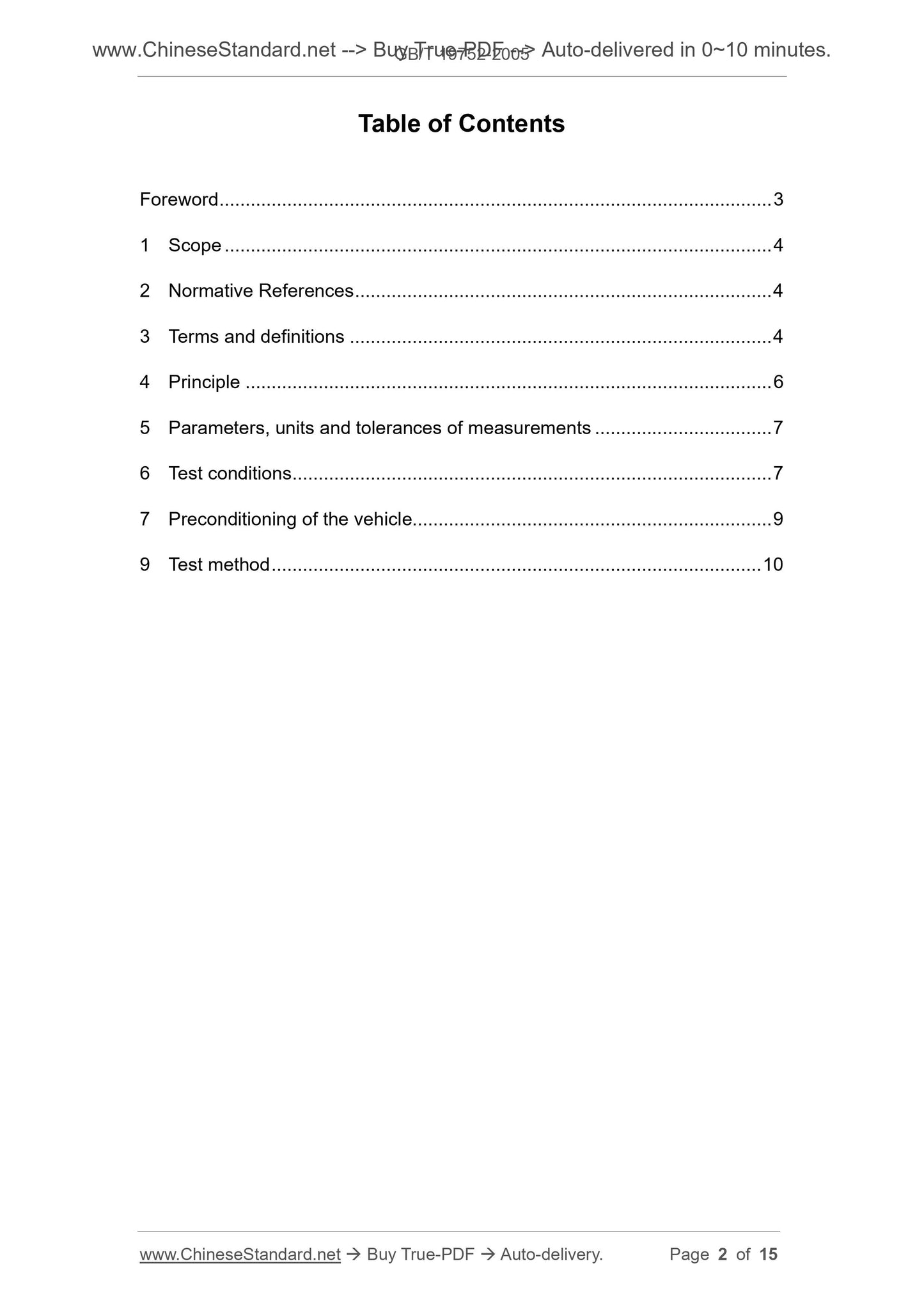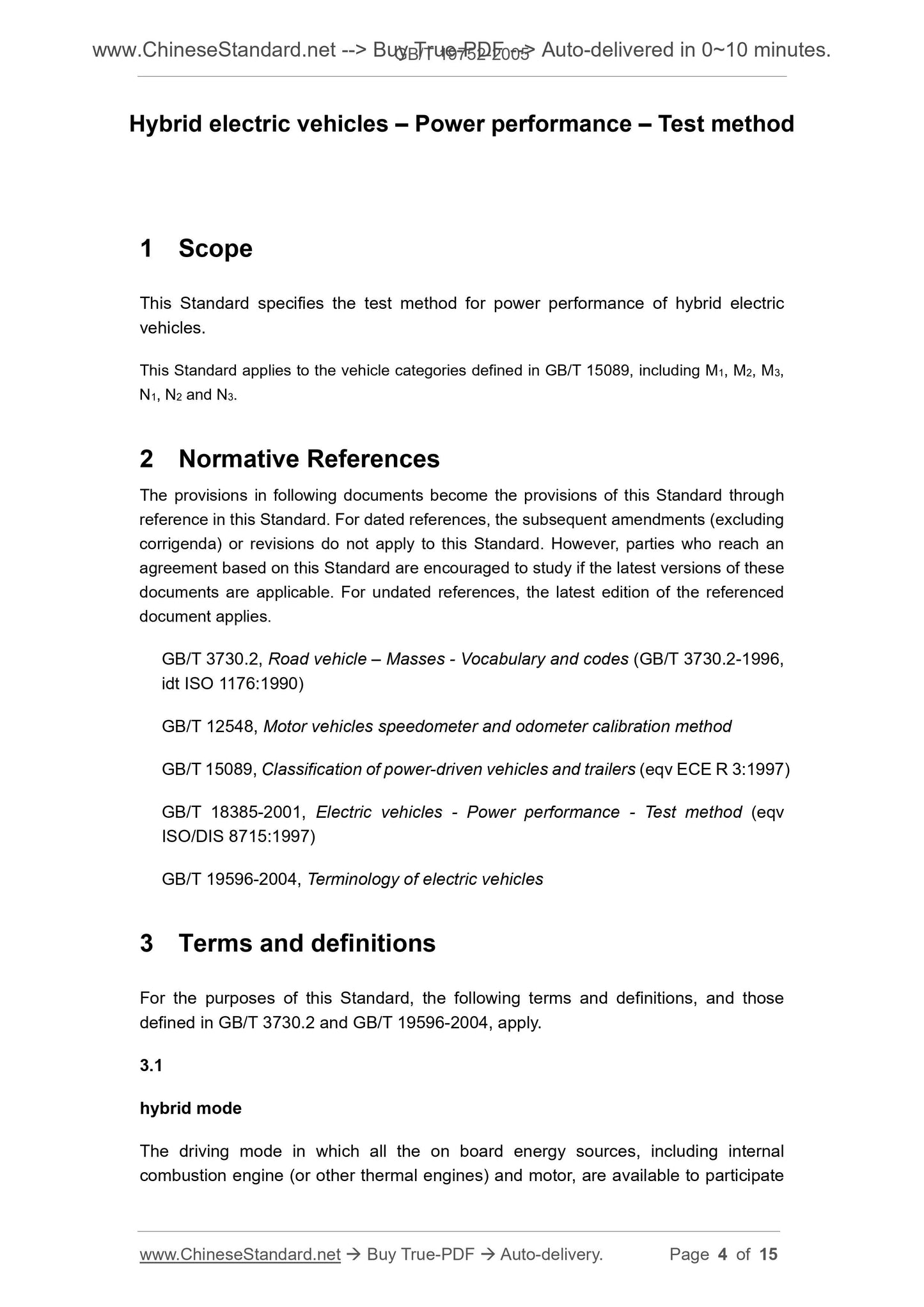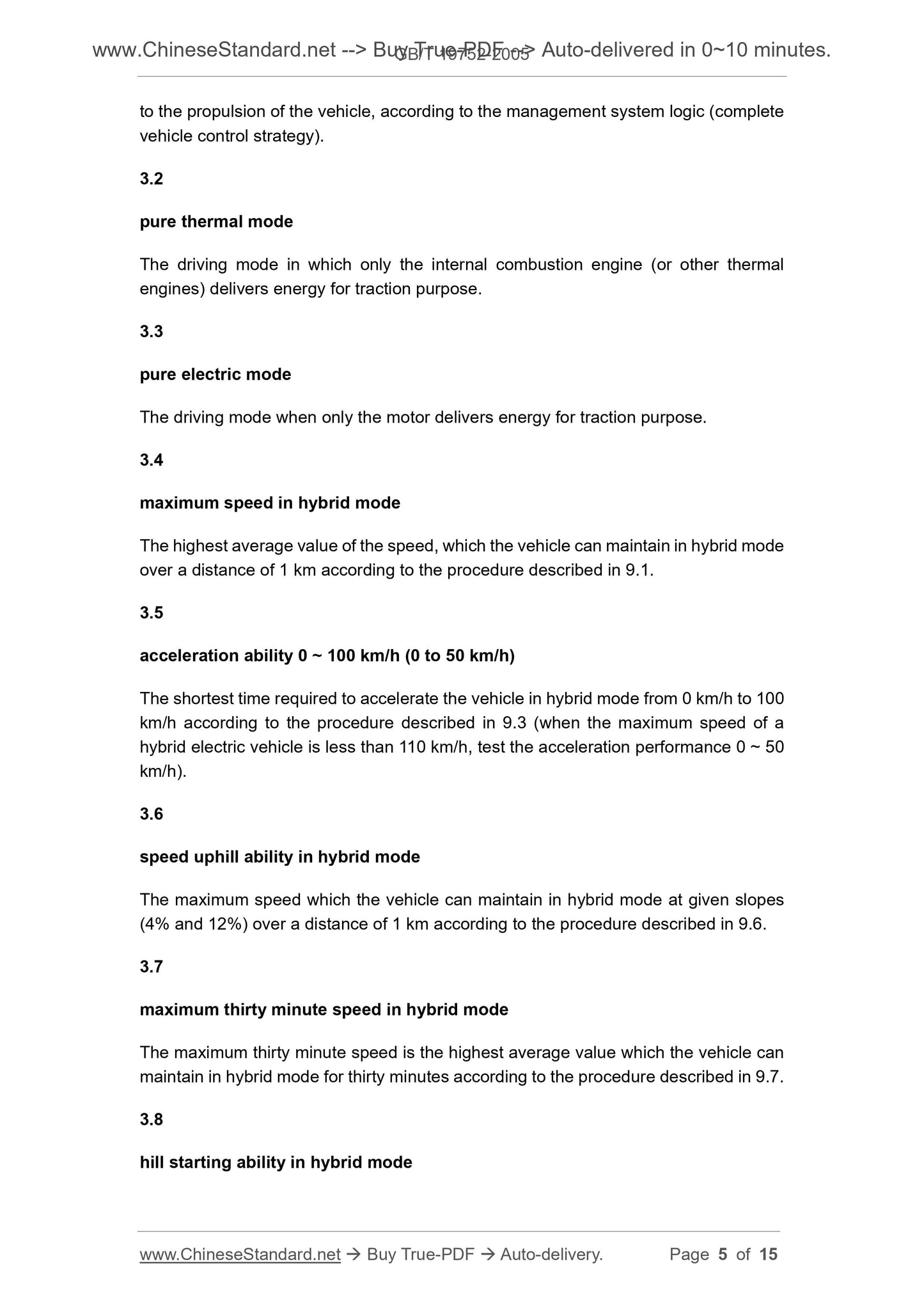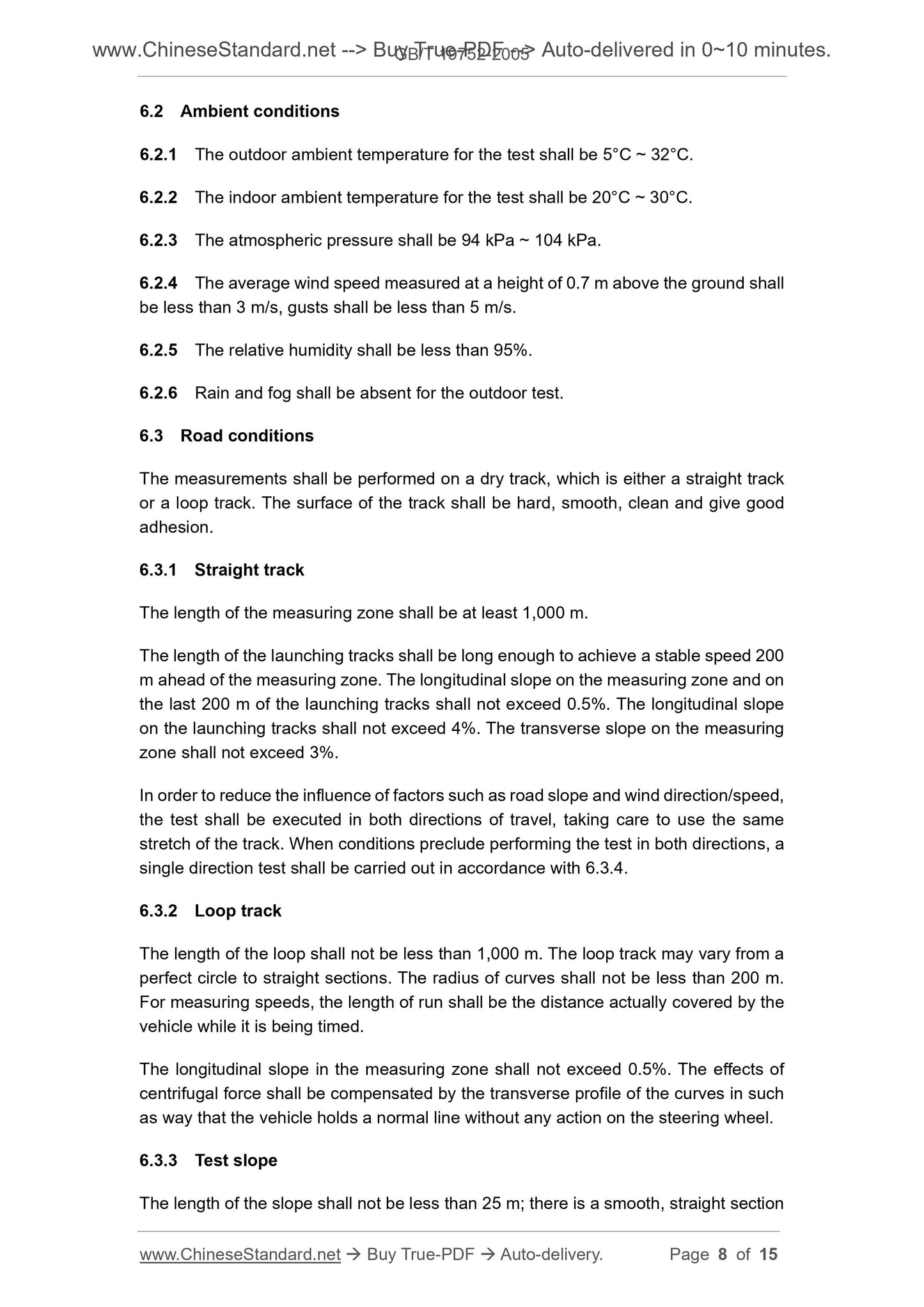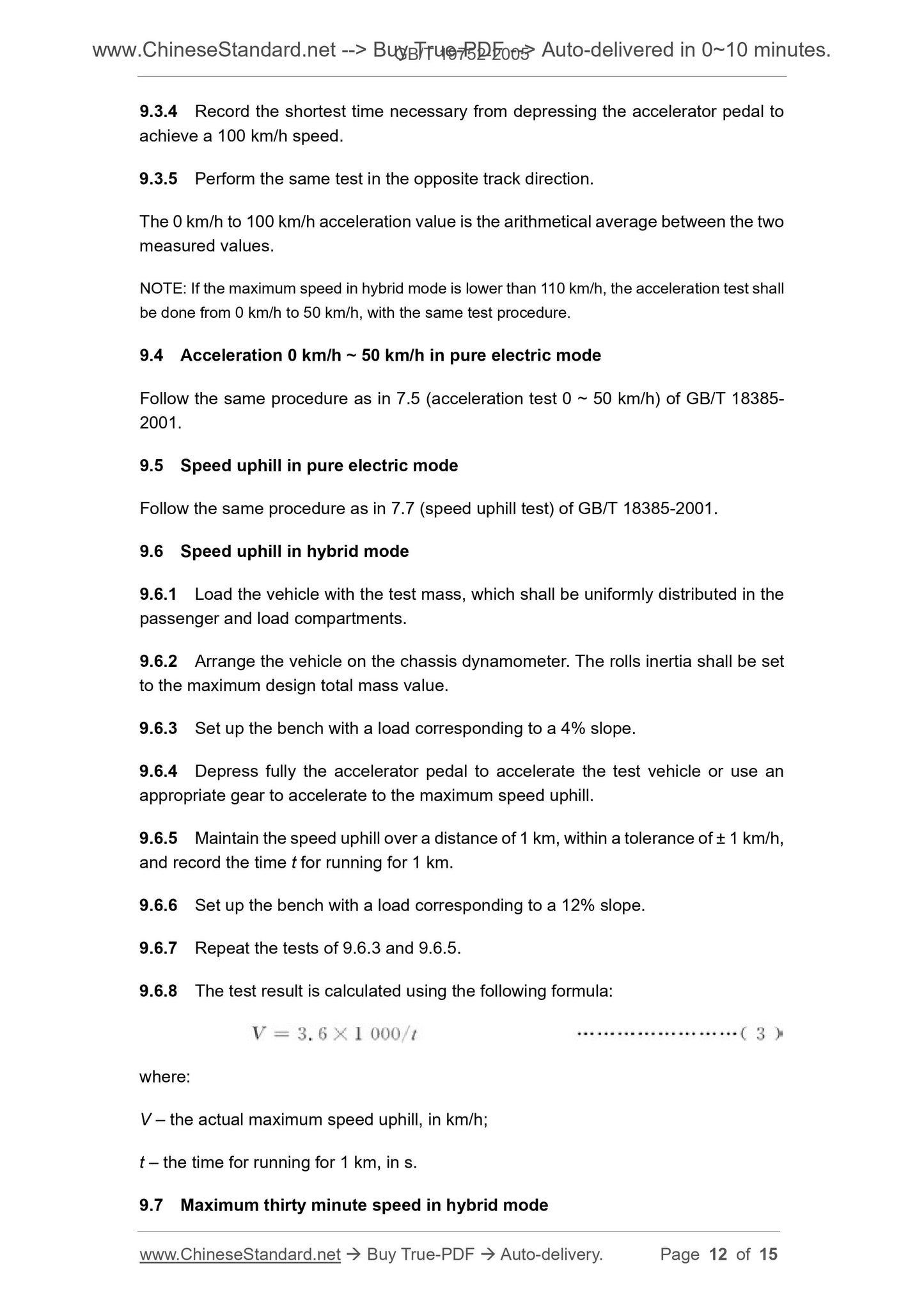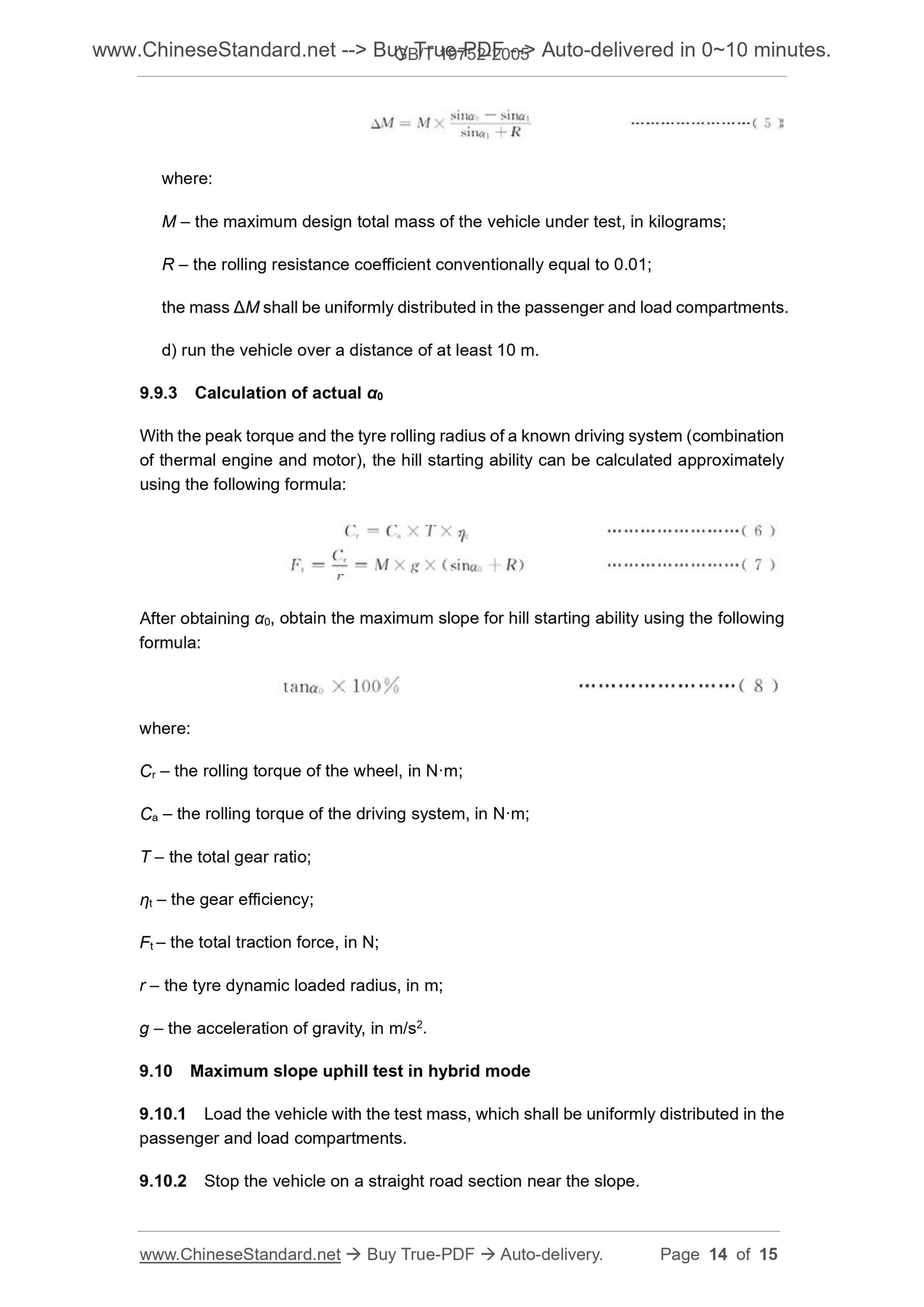1
/
of
7
PayPal, credit cards. Download editable-PDF and invoice in 1 second!
GB/T 19752-2005 English PDF (GB/T19752-2005)
GB/T 19752-2005 English PDF (GB/T19752-2005)
Regular price
$75.00
Regular price
Sale price
$75.00
Unit price
/
per
Shipping calculated at checkout.
Couldn't load pickup availability
GB/T 19752-2005: Hybrid electric vehicles - Power performance - Test method
Delivery: 9 seconds. Download (and Email) true-PDF + Invoice.Get Quotation: Click GB/T 19752-2005 (Self-service in 1-minute)
Newer / historical versions: GB/T 19752-2005
Preview True-PDF
Scope
This Standard specifies the test method for power performance of hybrid electricvehicles.
This Standard applies to the vehicle categories defined in GB/T 15089, including M1, M2, M3,
N1, N2 and N3.
Basic Data
| Standard ID | GB/T 19752-2005 (GB/T19752-2005) |
| Description (Translated English) | Hybrid electric vehicles. Power performance. Test method |
| Sector / Industry | National Standard (Recommended) |
| Classification of Chinese Standard | T47 |
| Classification of International Standard | 43.080.01 |
| Word Count Estimation | 10,197 |
| Date of Issue | 2005-05-23 |
| Date of Implementation | 2005-10-01 |
| Issuing agency(ies) | General Administration of Quality Supervision, Inspection and Quarantine of the People Republic of China, China National Standardization Administration Committee |
| Summary | This standard specifies: hybrid electric vehicle power performance test method. This standard applies to: GB/T 15089 defined-M1, M2, M3, N1, N2, N3 type hybrid vehicles. |
Share
